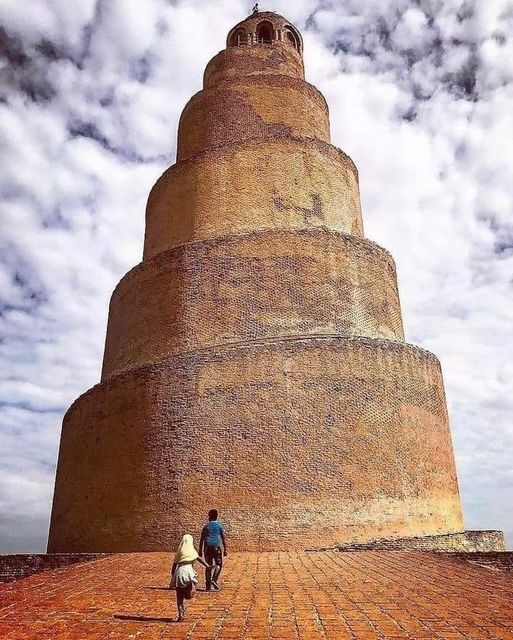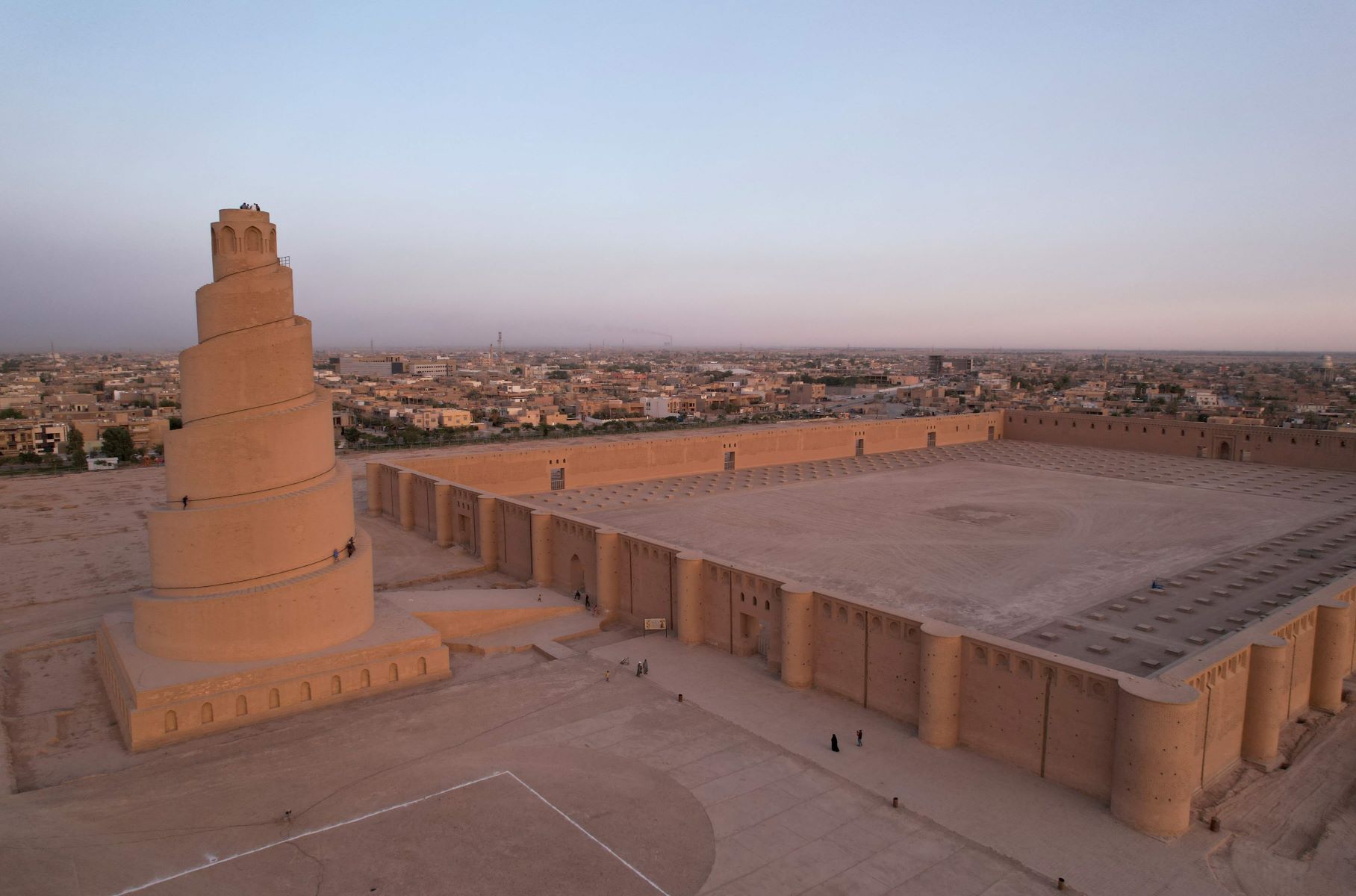Samarra’s Great Mosque: Early Islamic marvel.

The Great Mosque of Samarra, also referred to as the Samarra Mosque, stands as a monumental testament to the architectural prowess and cultural richness of early Islamic civilization. Located in Samarra, Iraq, this mosque was erected during the illustrious Abbasid Caliphate in the 9th century.
Central to the mosque’s grandeur is its most iconic feature: the Malwiya Tower, a spiral minaret that spirals upwards like a vast snail shell, symbolizing the celestial ascent of the faithful to the heavens above. This distinctive architectural marvel not only served a practical purpose as a call to prayer but also represented the Abbasid caliphs’ ambitious architectural vision.

Spanning an impressive area of 38,000 square meters (about 9.4 acres), the Great Mosque of Samarra was among the largest mosques globally at the time of its construction. Its rectangular floor plan, measuring approximately 239 meters by 156 meters, encompassed a vast courtyard and numerous chambers dedicated to prayer, study, and communal gathering.

Surrounding the mosque was a formidable outer wall fortified with 44 semi-circular towers, underscoring its strategic and defensive importance within the city of Samarra. This architectural ensemble not only served as a place of worship but also as a focal point for scholarly discourse, cultural exchange, and administrative functions during the Abbasid era.
In recognition of its historical significance and architectural splendor, both the Great Mosque of Samarra and the archaeological city of Samarra have been designated as a UNESCO World Heritage Site. This prestigious accolade underscores their importance in preserving and celebrating the rich heritage of early Islamic civilization.

Visiting the Great Mosque of Samarra today offers a glimpse into the golden age of Islamic art and architecture, where intricate geometric patterns, ornate calligraphy, and majestic domes adorned the sacred spaces. It stands as a testament to the Abbasid caliphs’ dedication to advancing knowledge, embracing diversity, and fostering cultural flourishing in the heart of the Islamic world.

The legacy of the Great Mosque of Samarra continues to inspire admiration and awe, serving as a beacon of cultural heritage and historical continuity amidst the challenges of the modern world. It remains not only a place of spiritual contemplation but also a symbol of resilience and perseverance across centuries of change and transformation.










